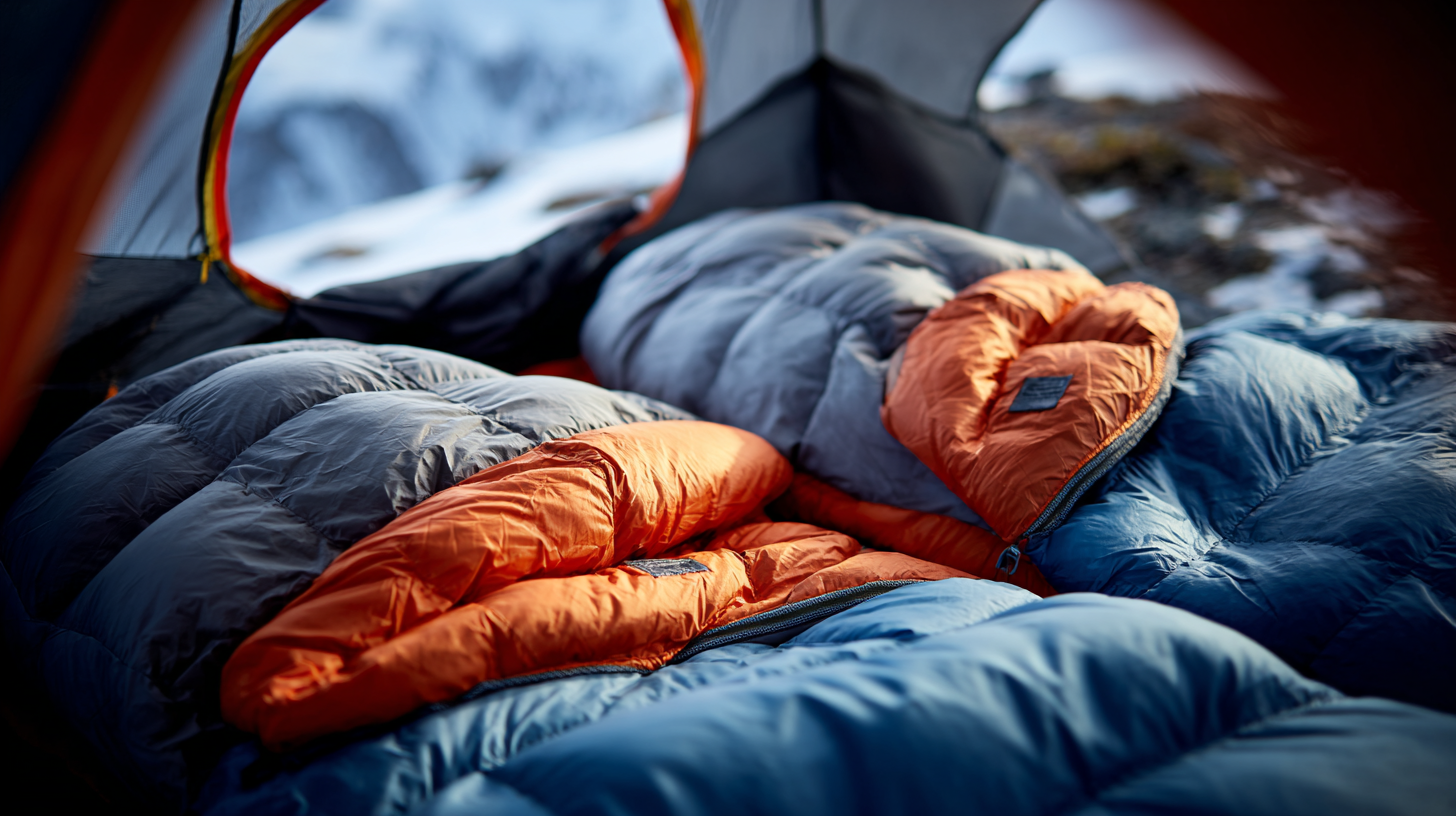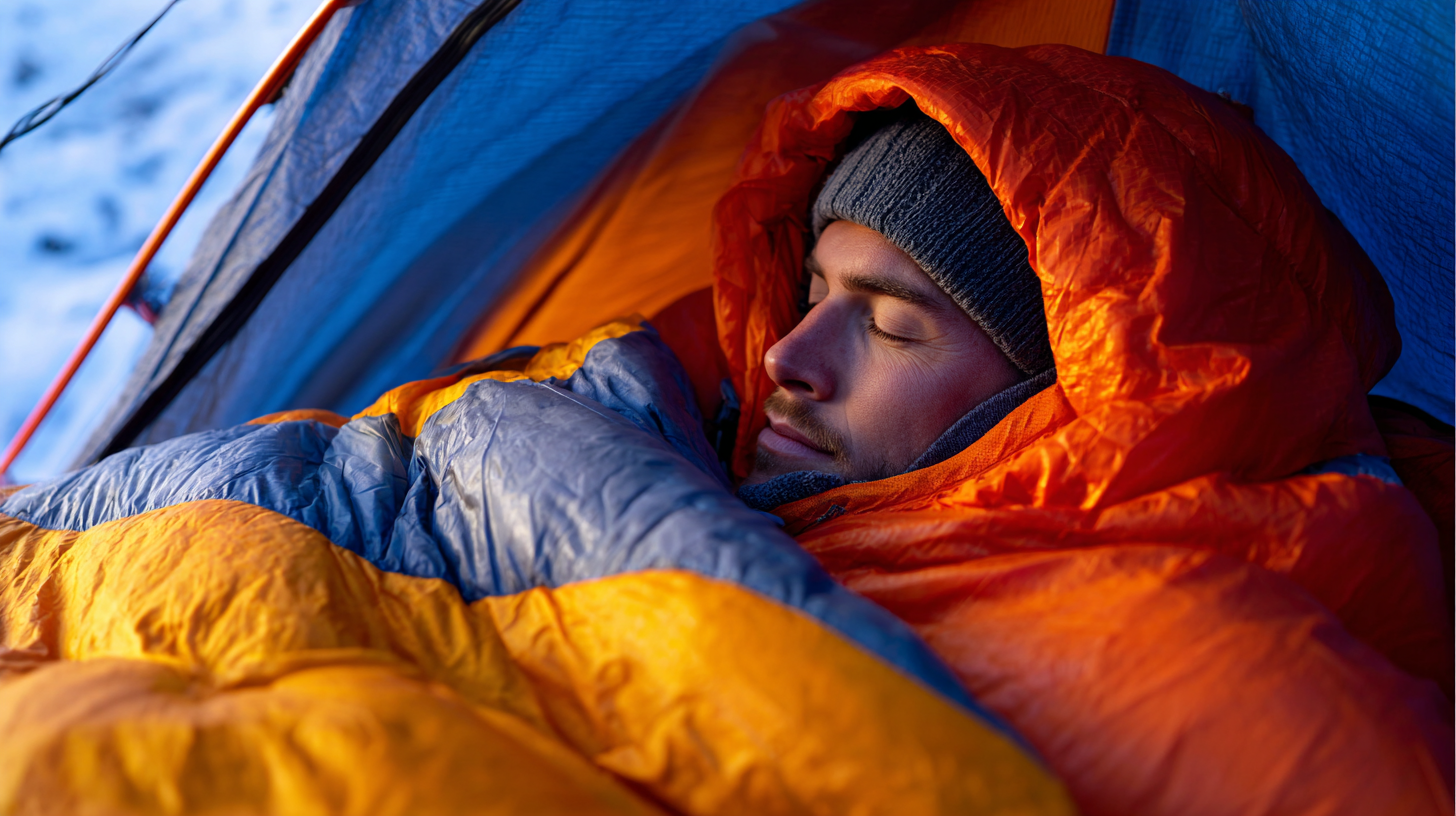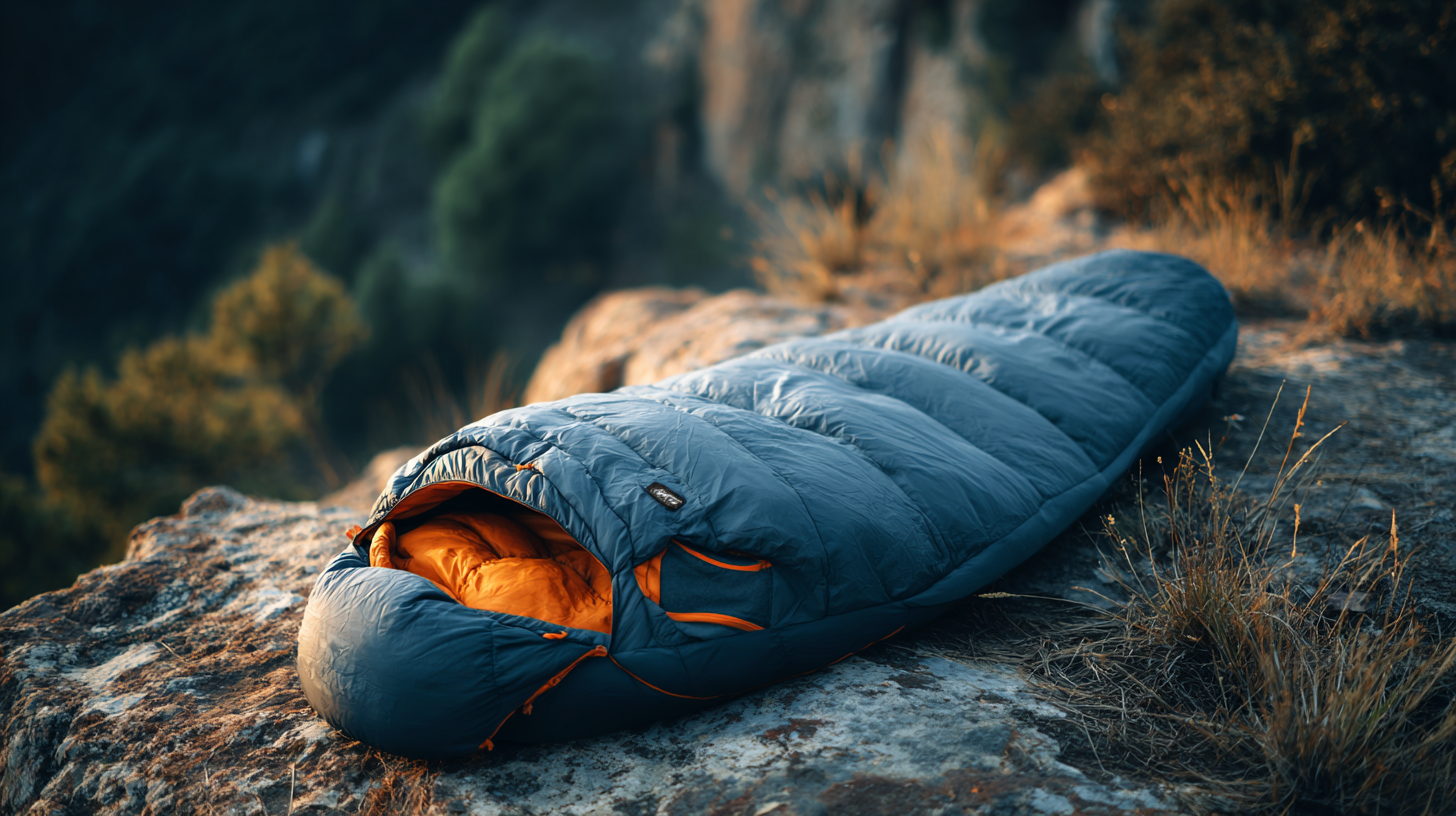Leave Your Message
-
E-mail
-
Whatsapp
When it comes to enjoying the great outdoors, a good night’s sleep can make all the difference in your adventures. Choosing the right gear, particularly "Top Sleeping Bags", is essential for comfort and safety during camping, hiking, or backpacking trips. According to a recent survey by the Outdoor Industry Association, nearly 60% of campers identify comfort as their primary concern when selecting sleeping gear, highlighting the importance of investing in high-quality sleeping bags. Furthermore, studies indicate that a well-chosen sleeping bag can contribute to more restful sleep, which is crucial for physical recovery and mental alertness on the trail. With advancements in materials and insulation technology, the best top sleeping bags offer impressive thermal efficiency and lightweight portability, enabling outdoor enthusiasts to tackle their adventures with ease and comfort. This blog will delve into the key advantages of selecting the best top sleeping bags, ensuring that your next expedition is both enjoyable and rejuvenating.

When embarking on outdoor adventures, the quality of your sleeping bag is paramount. A well-designed sleeping bag not only keeps you warm but also significantly enhances your overall experience in the great outdoors. Investing in a high-quality sleeping bag means you'll have better insulation and comfort, which can make all the difference on chilly nights.
Tips for choosing the right sleeping bag include focusing on insulation material. Down insulation offers excellent warmth-to-weight ratio, making it ideal for backpackers, while synthetic materials are great for wet conditions as they maintain insulation even when damp. Additionally, consider the temperature rating of the bag; ensure it's suited to the coldest temperatures you might encounter during your trip. A great choice can elevate your rest and energy levels, allowing you to fully enjoy your adventures.
While selecting a sleeping bag, pay attention to the shape and size. Mummy bags are more thermally efficient but can feel restrictive, while rectangular bags offer more room but may lose heat more quickly. Also, look for features like a draft collar and adjustable hoods to enhance warmth retention. Making informed choices about the quality and functionality of your sleeping bag is essential for unlocking comfort on your journeys.
| Feature | Description | Advantages |
|---|---|---|
| Material Quality | High-quality materials enhance durability and comfort. | Longer lifespan; greater resistance to wear and tear. |
| Insulation Type | Down or synthetic insulation options for warmth. | Better thermal efficiency; lighter weight for packing. |
| Weight | Compact design that minimizes weight. | Easier to carry on long hikes; less pack fatigue. |
| Temperature Rating | Ratings indicate the lowest temperature for use. | Ensure comfort and safety in varying climates. |
| Packability | Ability to compress into a small size. | Saves space in your backpack; convenient for travel. |
| Zipper Quality | Durable zippers that function smoothly. | Prevents snagging; enhances ease of use. |
When selecting the best sleeping bags for your outdoor adventures, there are several key features you should consider to ensure maximum comfort and performance. First and foremost, insulation type plays a crucial role. Down insulation provides warmth and compressibility, while synthetic insulation offers durability and moisture resistance. If you plan to camp in wet conditions, synthetic materials may be more suitable.
Another important factor is temperature rating. Always choose a sleeping bag that matches the climate of your adventure. A three-season bag is ideal for versatility, accommodating a range of temperatures. Additionally, consider the bag’s shape; mummy bags are excellent for heat retention, while rectangular bags offer more room to move.
Tips: Make sure to test the sleeping bag in cooler conditions before your trip to get a feel for its warmth. Also, pay attention to the bag's weight and packability—especially if you'll be hiking long distances. Invest in a sleeping bag with a durable water-repellent finish (DWR) to enhance its performance in humid environments. These considerations will help you select a sleeping bag that provides comfort and security on all your adventures.
When it comes to selecting the best sleeping bags for your adventures, understanding how to identify reliable sleeping bag manufacturers is crucial. Quality sleeping bags are essential for ensuring comfort and warmth during your outdoor excursions. To start, look for manufacturers with a strong track record and positive customer reviews. Companies that have been in the industry for several years often prove their reliability through consistent product performance.
Another important factor is the materials used in the sleeping bags. High-quality manufacturers typically utilize down or synthetic fills that provide excellent insulation and compressibility. Don’t hesitate to check certification labels, such as the Responsible Down Standard (RDS), to ensure ethical sourcing. Additionally, explore brands that offer a variety of models tailored for different climates and activities to ensure you pick the right one for your needs.
Tip: Always consider the sleeping bag’s weight and packability, especially if you plan on hiking or backpacking. A reliable sleeping bag should be lightweight yet warm enough for the conditions you expect to face. Look for features like waterproof shells and draft collars to enhance insulation. Such considerations can make a significant difference in your overall outdoor experience.

When planning outdoor adventures, selecting the right sleeping bag is essential for maintaining comfort throughout the night. Insulation types and materials play a vital role in ensuring a cozy sleep experience, especially in varying weather conditions. For instance, synthetic insulation, such as those derived from recycled materials, offers excellent warmth-to-weight ratios and quick drying capabilities, making them perfect for damp environments.
In addition, natural materials, like down feathers, provide exceptional insulation but require careful handling in moisture-prone areas. If you choose a down sleeping bag, consider treating it with water-resistant coating to enhance its performance. Thermal performance evaluation indicates that integrating phase-change materials can also optimize warmth retention, which is crucial during chilly nights.
**Tip:** When selecting a sleeping bag, consider your adventure's specific climate. If you're heading into colder regions, a sleeping bag with robust insulation, like rock wool or cellulose-based materials, can significantly enhance your thermal comfort.
**Tip:** Always check the temperature rating of your sleeping bag to ensure it matches the weather conditions you expect. Test your gear at home before your trip to identify any personal comfort preferences.
When selecting the best top sleeping bags for your adventures, consumer reviews and testimonials serve as invaluable tools. These firsthand accounts help identify which products deliver on their promises and which fall short. Pay attention to feedback highlighting specific features such as warmth retention, comfort, and ease of packing. A sleeping bag that has garnered positive reviews for being lightweight yet durable is often a reliable choice for hikers and campers.
To ensure you choose wisely, look for patterns in reviews. If multiple users mention a similar issue, such as poor zipper quality or insufficient insulation, it might be wise to steer clear of that particular model. Additionally, consider reviews that discuss performance in various temperatures, as this can guide you in selecting a bag that suits your specific adventure needs.
Tip: Before making a purchase, check if the manufacturer offers a satisfaction guarantee or warranty. This often reflects a company's confidence in their product and can provide peace of mind. Moreover, take the time to read both positive and negative reviews to get a balanced view, helping you make an informed decision that enhances your future camping experiences.

